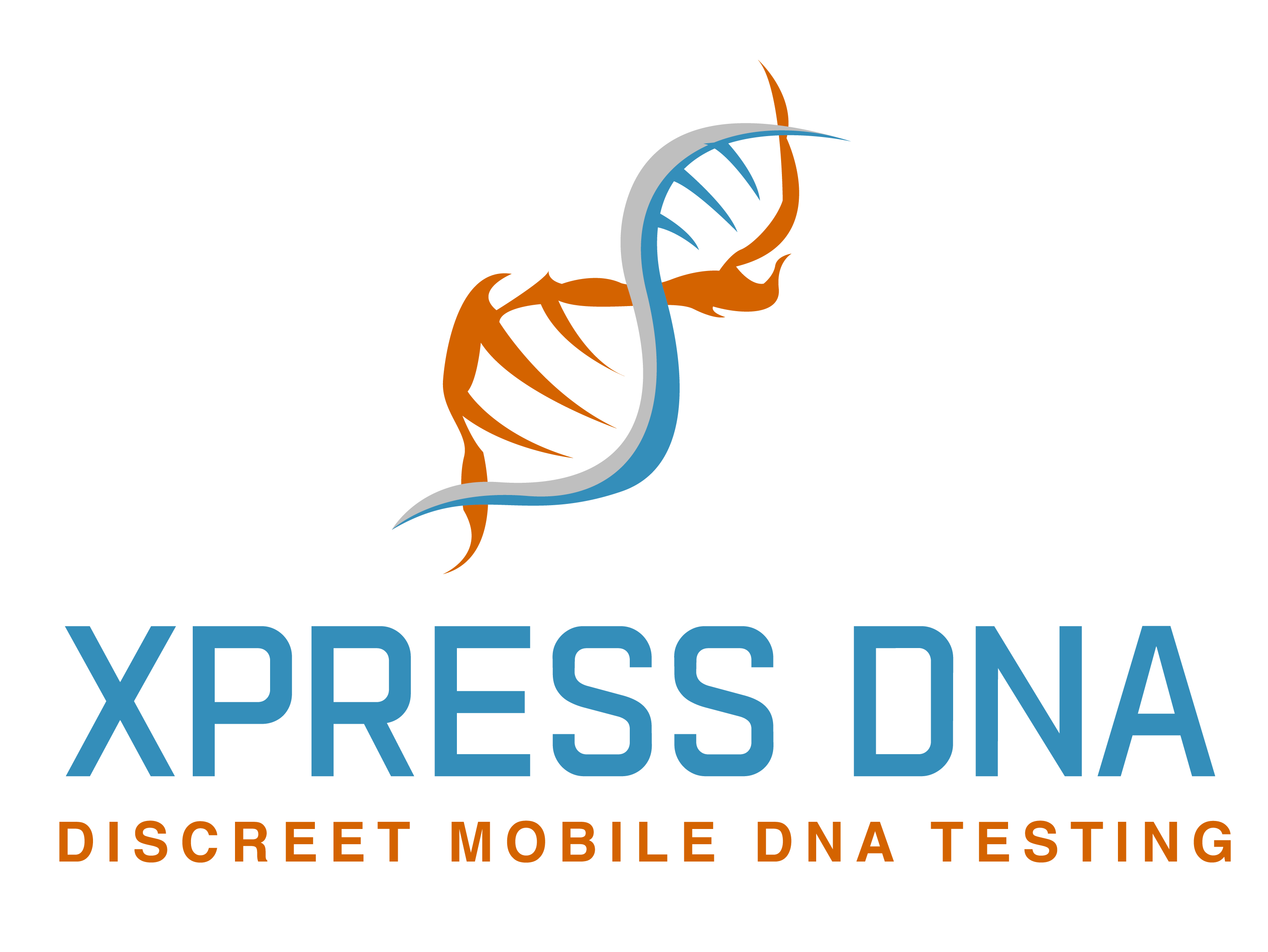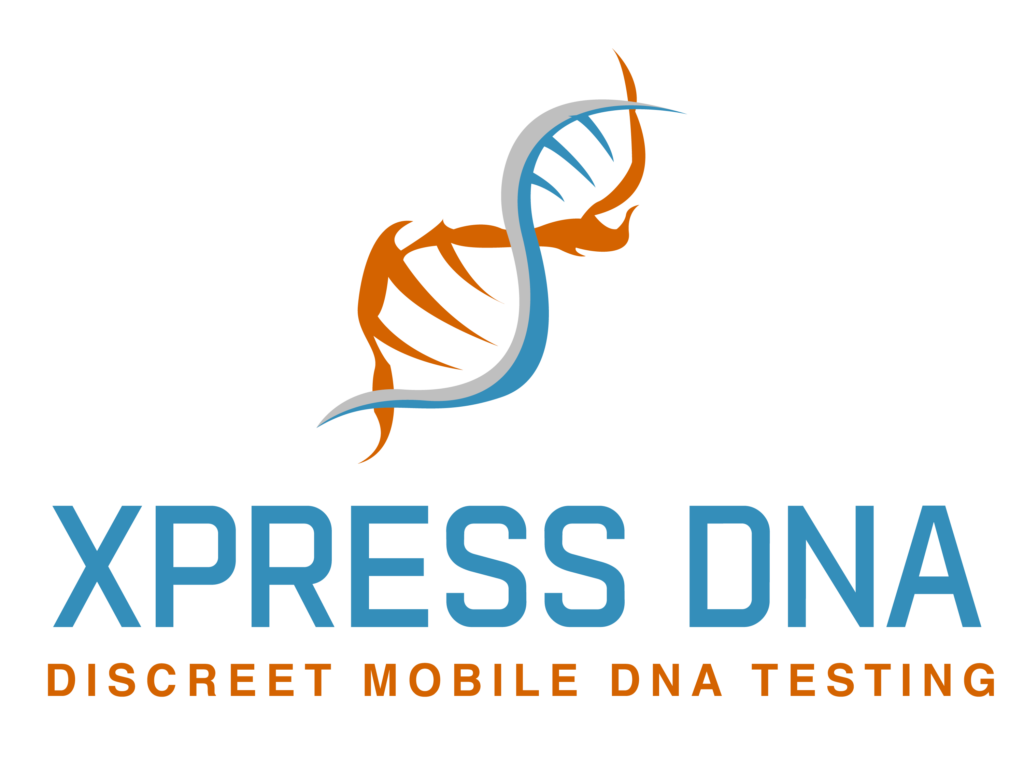Testing Services
Types Of Tests We Offer
Paternity
A paternity DNA test is a scientific method used to determine whether a man is the biological father of a child. The test compares the child’s DNA with that of the alleged father to assess the probability of a biological relationship.
Here’s a general overview of how it works:
Read More (+)
Sample Collection: DNA samples are collected from the child, the alleged father, and sometimes the mother, though the mother’s sample is not always required. Samples are usually collected using buccal swabs (a swab of the inside of the cheek) or, in some cases, from blood.
DNA Analysis: The collected samples are analyzed in a laboratory. The DNA from each sample is examined for specific genetic markers. These markers are compared to see if the child’s genetic profile matches the expected patterns of the alleged father’s profile.
Comparison and Calculation: The lab compares the genetic markers from the child and the alleged father. Statistical analysis is used to determine the probability of paternity. A high probability (typically 99.9% or higher) indicates a strong likelihood that the man is the biological father.
Results: The results are usually provided in a written report, detailing the probability of paternity. If the probability is very high, the test confirms the man as the biological father. If the probability is low, the test excludes the man as the biological father.
Paternity tests are highly accurate when performed correctly and are often used for legal purposes, such as custody cases or inheritance disputes, as well as for personal reasons.
Twin Zygosity
A twin zygosity DNA test is designed to determine whether twins are identical (monozygotic) or fraternal (dizygotic). Here’s a detailed overview:
What is Zygosity?
Monozygotic Twins (Identical Twins): These twins originate from a single fertilized egg that splits into two embryos. They share nearly identical DNA. Read More (+)
Dizygotic Twins (Fraternal Twins): These twins come from two separate eggs fertilized by two different sperm cells. They are genetically similar to each other as regular siblings but share about 50% of their DNA. How the Test Works: Genetic Analysis: The lab analyzes specific genetic markers and patterns in the DNA. This analysis focuses on comparing the genetic profiles of the twins. Comparison and Determination: Fraternal Twins: The test will show that the twins have distinct but overlapping genetic profiles, similar to what would be expected between regular siblings. Results: The results are provided in a report that indicates whether the twins are identical or fraternal. The report often includes a breakdown of the genetic similarities and differences found in the analysis.
Identical Twins: The test will show that the twins have nearly identical genetic profiles. Identical twins have almost the same DNA sequences.
Avuncular (Aunt/Uncle)
Avuncular DNA testing is a genetic analysis used to determine the biological relationship between a child and an aunt or uncle. It’s often employed when paternity or maternity tests are not feasible, or to confirm the relationship when one or both parents are unavailable for testing.
How Avuncular DNA Testing Works:
Read More (+)
- Sample Collection: DNA samples are collected from the child and the potential aunt or uncle. This is usually done using buccal swabs (swabs taken from the inside of the cheek) or occasionally from blood samples.
- DNA Extraction: The collected DNA samples are processed in a laboratory to extract genetic material.
- Genetic Analysis: The lab examines specific genetic markers in the DNA samples. These markers are used to compare the child’s DNA with that of the aunt or uncle.
- Statistical Comparison: The test analyzes the likelihood that the aunt or uncle is biologically related to the child. The comparison involves looking at how many genetic markers are shared between the child and the potential relative, and calculating the probability of a biological relationship based on these markers.
Uses and Benefits:
Family Disputes: It can help resolve family disputes over relationships, especially in cases where parental DNA is not available.
Legal Situations: Used in legal contexts such as inheritance cases or custody disputes when a direct parental test is not possible.
Medical Reasons: Helps in understanding genetic predispositions or health risks by confirming family relationships.
Avuncular DNA testing is a reliable method to establish the biological connection between a child and an aunt or uncle, providing clarity in various personal and legal matters.
Results: The results are provided in a detailed report that indicates the likelihood of the relationship. For instance, a high probability (usually 90% or higher) would suggest a strong likelihood that the tested individual is the child’s biological aunt or uncle.
Costs: $400
Non-Invasive Prenatal Paternity Test
A non-invasive prenatal paternity test is a method used to determine the biological father of an unborn child with a high degree of accuracy, without posing any risk to the fetus or mother. Here’s a detailed overview of how this test works:
How It Works:
Read More (+)
Non-Invasive Prenatal Paternity Testing
Sample Collection
- Mother: A blood sample is taken from the pregnant mother. This sample contains fetal DNA that has entered her bloodstream.
- Alleged Father: A DNA sample is collected from the alleged father, typically using a buccal swab (a cotton swab rubbed on the inside of the cheek).
DNA Extraction and Analysis
- Fetal DNA: The fetal DNA is extracted from the mother’s blood sample. This DNA is then analyzed alongside the father’s DNA sample.
- Comparison: The lab compares the genetic markers from the fetal DNA in the mother’s blood with those from the father’s DNA. This comparison assesses whether the genetic markers in the fetus match those of the alleged father.
Benefits
- Non-Invasive: Unlike invasive prenatal tests (such as amniocentesis or chorionic villus sampling), which carry some risk of miscarriage, this test only requires a blood sample from the mother, making it safer for both mother and baby.
- Early Testing: It can be performed as early as the 7th week of pregnancy, allowing for early confirmation of paternity.
- Accuracy: When performed correctly, non-invasive prenatal paternity tests are highly accurate, often achieving accuracy rates of 99% or higher.
Uses
- Family Planning: Helps clarify paternity early in pregnancy for family planning purposes.
- Legal Matters: Useful in legal situations, such as custody or child support disputes, where knowing the biological father is important.
- Medical Reasons: Can assist in assessing hereditary health risks if the paternity needs to be confirmed for medical reasons.
Non-invasive prenatal paternity testing offers a safe, accurate, and early method to establish paternity, providing crucial information without endangering the pregnancy.
Results: The test results provide a probability of paternity. A high probability (typically 99% or higher) indicates a strong likelihood that the man is the biological father of the child. If the probability is low, the test excludes the man as the biological father.
Costs: $400
Grand-parentage
Grand-parentage DNA testing is a genetic analysis used to determine whether an individual is the biological grandparent of a child. This test is often employed when the biological parents are unavailable or when there are disputes regarding the child’s lineage.
Here’s a detailed overview:
Read More (+)
How It Works:
Sample Collection:
- Child: A DNA sample is collected from the child, usually using a buccal swab (a cotton swab rubbed on the inside of the cheek).
- Grandparents: DNA samples are collected from the child’s potential grandparents, also typically using buccal swabs. Sometimes, the parents of the child may also be tested if available.
DNA Extraction: The collected samples are processed in a laboratory to extract the DNA from each sample.
Genetic Analysis: The lab analyzes specific genetic markers in the DNA samples from the child and the grandparents. The analysis focuses on comparing these markers to determine if the genetic material from the grandparents is consistent with that of the child’s DNA.
Statistical Comparison: The lab performs statistical calculations to estimate the probability of the grand-parentage. This involves comparing the genetic markers to see if they align with the expected patterns of inheritance from the child’s parents. The results will indicate the likelihood that the tested individuals are the biological grandparents of the child.
Benefits:
- Family Disputes: Helps resolve disputes about grand-parentage, which can be important for inheritance, custody, or family legal matters.
- Medical History: Assists in understanding family medical history, which can be crucial for assessing genetic health risks and conditions.
- When Parents Are Unavailable: Useful in situations where the child’s biological parents are unavailable or unwilling to participate in a direct parentage test.
Uses:
- Legal Cases: Often used in legal contexts, such as inheritance claims or custody battles, to establish the biological link between a child and their grandparents.
- Family Planning and Health: Provides clarity for family planning and medical reasons, especially when genetic conditions or hereditary diseases are a concern.
Grand-parentage DNA testing is a reliable method for establishing biological connections within a family, providing valuable information for personal, legal, and medical purposes.
Results: Testing time typically takes 3 to 6 business days. The results are provided in a report that details the probability of grand-parentage. A high probability (often 90% or higher) indicates a strong likelihood that the tested individuals are the child’s biological grandparents. If the probability is low, the test may exclude the individuals as the child’s biological grandparents.
Our fees for grandparent testing are as follows:
- Non Legal Grandparent Office Test (includes 1 grandparent and 1 child): $600
- Legal Grandparent Office Test (includes 1 grandparent and 1 child): $700
- Home Grandparent DNA KIT (1 grandparent and 1 child): $500
Siblingship
Sibling DNA testing is used to determine whether two individuals are full siblings, half-siblings, or not related at all. This test is helpful in various situations where direct parentage testing (such as paternity or maternity tests) is not feasible.
Here’s a detailed description of how sibling DNA testing works:
Read More (+)
How It Works:
Sample Collection:
- Siblings: DNA samples are collected from the individuals being tested. This is typically done using buccal swabs (cotton swabs rubbed on the inside of the cheek) or, less commonly, through blood samples.
DNA Extraction: The DNA is extracted from the collected samples in a laboratory.
Genetic Analysis: The lab analyzes specific genetic markers in the DNA samples. These markers are compared to identify shared genetic traits between the siblings. The test examines the genetic overlap to determine the likelihood of the siblings being full siblings (sharing both parents), half-siblings (sharing one parent), or unrelated.
Statistical Comparison: The analysis calculates the probability of the sibling relationship based on the genetic data. The comparison involves assessing the degree of genetic similarity between the two individuals. For full siblings, there is a high level of shared genetic material (about 50%). For half-siblings, there is a lower level of shared DNA (about 25%). If the individuals are not siblings, the shared DNA would be minimal.
Benefits:
- Family Disputes: Useful in resolving disputes about sibling relationships, which can be important for inheritance, custody, or family dynamics.
- Medical Reasons: Helps in understanding family medical history, which can be important for assessing genetic risks and conditions.
- When Parents Are Unavailable: Provides information when direct parentage testing is not possible, such as when parents are deceased or unavailable.
Uses:
- Legal Cases: Often used in legal contexts, such as inheritance disputes or custody battles, to establish sibling relationships.
- Personal Curiosity: Provides clarity for individuals seeking to understand their family relationships or genealogy.
- Health Assessment: Assists in understanding genetic predispositions and health risks by confirming sibling relationships.
Sibling DNA testing is a reliable method for determining familial connections, offering valuable insights for legal, medical, and personal purposes.
Results: Testing time typically takes 3 to 6 business days. The results are provided in a detailed report. It typically includes the probability of the individuals being full siblings, half-siblings, or unrelated. A high probability (e.g., 99% or higher) indicates a strong likelihood of the sibling relationship being confirmed.
Costs:
- Additional Sibling Legal: $400
- Non-Legal Sibling: $300
Infidelity
An infidelity DNA test is designed to detect the presence of another person’s DNA in a partner’s belongings to investigate suspicions of infidelity. This type of test can provide evidence that may support or refute concerns about a partner’s potential unfaithfulness.
Here’s a detailed description: How It Works: DNA Extraction: The DNA is extracted from the collected samples in a laboratory. This process involves isolating genetic material from the items in question. Genetic Analysis: The lab analyzes the extracted DNA to identify and profile any foreign DNA found on the items. This is done using various forensic DNA techniques to detect and differentiate between different DNA profiles. If foreign DNA is detected, it is examined to determine if it matches any known profiles (if reference samples are available) or if it is an unknown profile. Benefits: Limitations: An infidelity DNA test provides a tool for investigating suspicions of unfaithfulness by detecting foreign DNA on personal items. While it can offer insights, it should be interpreted with caution and in the context of the broader circumstances. Results: Testing time typically takes 3 to 6 business days. The test results are provided in a detailed report. The report will indicate whether foreign DNA was found and, if applicable, whether it matches the DNA of a specific individual (if reference samples were used). The report may also include the quantity of foreign DNA detected and the likelihood that it came from a third party. Costs: $400
Read More (+)
Sample Collection:
Ancestry testing
Ancestry DNA testing is a genetic analysis that provides insights into an individual’s ancestral origins and ethnic heritage. By examining specific markers in the DNA, these tests can offer information about a person’s ethnic background, geographic origins, and familial connections.
Here’s a detailed overview of how ancestry DNA testing works: How It Works: DNA Extraction: The laboratory processes the sample to extract DNA from the collected cells. Genetic Analysis: The lab examines specific regions of the DNA known as genetic markers. These markers are associated with various ancestral and ethnic traits. The analysis focuses on identifying patterns and variations in these markers to determine the individual’s genetic heritage. Ethnicity Estimation: Genealogical Insights: Benefits: Limitations: Ancestry DNA testing provides valuable insights into an individual’s ethnic origins and family history by analyzing genetic markers. It offers a way to explore personal heritage, connect with distant relatives, and understand ancestral roots. Results: Testing time typically takes 3 to 6 business days. The results include a detailed report showing the estimated percentages of various ethnicities or geographic ancestries. For services that include genealogical features, the results may show matches with other users who share similar genetic markers. Costs: $400
Read More (+)
Sample Collection:
Types Of Tests We Offer

A paternity DNA test is a scientific method used to determine whether a man is the biological father of a child. The test compares the child's DNA with that of the alleged father to assess the probability of a biological relationship.
how it works:

Sample Collection
DNA samples are collected from the child, the alleged father, and sometimes the mother, though the mother’s sample is not always required. Samples are usually collected using buccal swabs (a swab of the inside of the cheek) or, in some cases, from blood.

DNA Analysis
The collected samples are analyzed in a laboratory. The DNA from each sample is examined for specific genetic markers. These markers are compared to see if the child’s genetic profile matches the expected patterns of the alleged father’s profile.

Comparison and Calculation
The lab compares the genetic markers from the child and the alleged father. Statistical analysis is used to determine the probability of paternity. A high probability (typically 99.9% or higher) indicates a strong likelihood that the man is the biological father.

Results
The results are usually provided in a written report, detailing the probability of paternity. If the probability is very high, the test confirms the man as the biological father. If the probability is low, the test excludes the man as the biological father.

A twin zygosity DNA test is designed to determine whether twins are identical (monozygotic) or fraternal (dizygotic). Here’s a detailed overview:
These twins originate from a single fertilized egg that splits into two embryos. They share nearly identical DNA.
These twins come from two separate eggs fertilized by two different sperm cells. They are genetically similar to each other as regular siblings but share about 50% of their DNA.
DNA samples are collected from each twin. This is typically don

